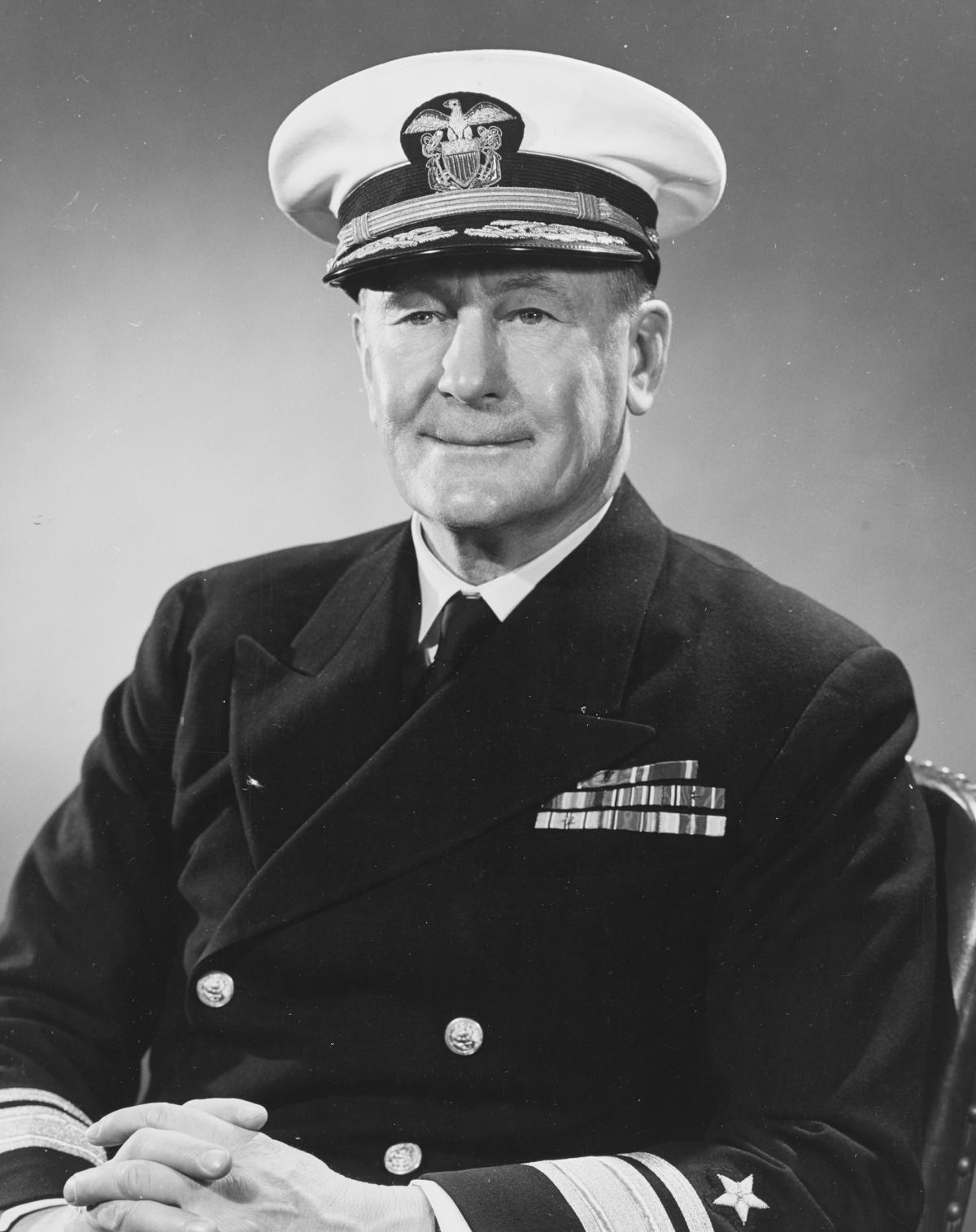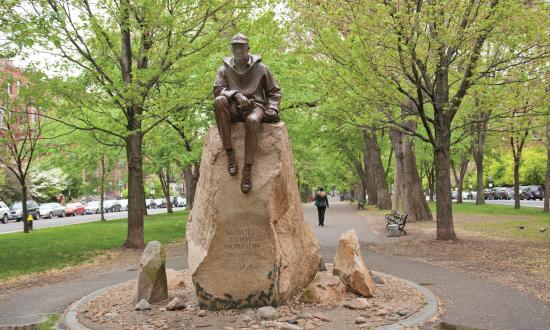In April 1999, two Navy Reserve officers landed aboard the USS Enterprise (CVN-65), then patrolling the Persian Gulf, and proceeded to spend the next two weeks collecting documentation and conducting interviews with dozens of members of the crew and embarked air wing about the events that transpired between 16 and 19 December 1998, in what was called Operation Desert Fox.
In documenting that aircraft carrier’s lead role in conducting punitive strikes in response to Iraq’s refusal to cooperate with U.N. inspectors, the two reservists were performing duties that harkened back to World War II, when historians, led by Samuel Eliot Morison, were commissioned as naval officers of ranks commensurate with their academic experience and sent out to capture the momentous history that was the Battle of the Atlantic and the War in the Pacific. Of course, the result of that effort was Morison’s 15-volume History of United States Naval Operations in World War II series, which has served as a key secondary source for follow-on authors such as John Prados, Richard Frank, James Hornfischer, Ian Toll, and Trent Hone.
Of note, what might be of more significance historically about the 1999 Enterprise collection effort is not that Operation Desert Fox illustrated the tactical advantages of sea-based versus land-based air power but that the four-day operation was the first time women flew in combat for the U.S. military. Little doubt, these interviews will someday serve as an excellent primary source for some scholarly study that examines the integration of women to perform combat roles.1
Sadly, the Navy has decided to eliminate this combat history-capture capability by defunding the billets of Navy Reserve Combat Documentation Detachment 206, assigned to the Naval History and Heritage Command (NHHC). Apparently, with the end of the war in Afghanistan and changing Navy Reserve billet priorities, assigned billets supporting the NHHC ability to document naval warfighting are to be phased out over the next three years, leading to the unit’s disestablishment.
Formed in the wake of Operation Desert Shield/Storm to reestablish a capability first established in World War II to assign Navy Reserve officers to collect historical records and interviews for use in official histories, the unit sent reservists, a few having advanced degrees in history, to cover operations in the Balkans in the 1990s, Operation Desert Fox, the USS Cole (DDG-67) bombing, the attacks on 9/11, and Operations Enduring Freedom and Iraqi Freedom, as well as operations around the Horn of Africa and in the Pacific.
The unit also had conducted numerous end-of-tour interviews with departing senior flag officers and senior naval officials. In addition, the unit often had provided reservists to the Joint History Office to participate in joint documentation teams to support Combatant Commander collection needs.
Indeed, two decades ago, in the wake of the 9/11 attacks, the Navy, recognizing the return on investment, actually doubled the number of reservists assigned to capturing warfighting history to 57 by assigning reservists to provide direct operational historical collection support to some two dozen Echelon II combat force–providing commands. Whereas having a full-time civilian or active-duty historian on staff is a given for comparable Echelon II commands in the Army and Air Force, this effort to inject at least a part-time individual to ensure the proper collection of logs, unit debriefs, digital materials, and oral histories with the engagement command team was an “on-the-cheap” solution to address a serious deficiency identified in a major study commissioned by the Navy and conducted by History Associates Inc.
At this point it’s time to yell: “Dudes, what are you thinking?”
It would be naïve to think that the U.S. withdrawal from the ongoing hotspot that is Afghanistan means we have established peace in our time. ISIS and al-Qaeda continue to pose a threat. China, Russia, Iran, and North Korea are not our friends. Other pockets of instability continue to fester on nearly all of the planet’s continents, serving as potential triggers for American military intervention likely led by the Navy–Marine Corps team. In addition, noncombat-related missions can be worthy of combat documentation, such as natural disasters where U.S. sailors and Marines are often the first on scene to conduct rescue-and-recovery operations and offer care and comfort.
For three decades Det. 206 reservists have been a vital cog in the Navy’s mandate following combat missions to perform rigorous operations analysis and conduct full and complete documentation of all phases of combat operations, including all intelligence, climatic, and other information available to the command. To further quote SECNAV Manual M-5210.1:
The purpose of this analysis is to assess the effectiveness of weapons and tactics, suggest methods of improvement that have been tested in actual combat situations, determine adjustments required to force composition and systems design, justify future budget decisions, or other purposes as may be specified by higher authority.2
Ironically, the need to retain this uniformed combat documentation collection capacity is greater today than in World War II, when commanders were required to submit detailed after-action reports of the engagements in which they participated. With those reports eventually being declassified, a multi-volume series on par with Morison’s magnum opus could have been written—decades later.
One example of the continuing value of such reports could be seen in an exchange of emails between now-deceased Vice Admirl Henry C. Mustin and noted analyst Peter Swartz and historian David Alan Rosenberg in which Mustin claimed that Arleigh Burke’s after-action report following the Battle of Empress Augusta Bay provided him the inspiration in writing the Second Fleet Fighting Instructions—an important document to consider when evaluating the Maritime Strategy of the 1980s.
As for the value of those after-action reports during World War II, Rosenberg would argue they were key to fighting the Imperial Japanese Navy in the Solomons and, along with the Commander-in-Chief (COMINCH) Battle Experience series, were used to improve warfighting practice and in turn inspired Burke to develop his “doctrine of faith” in subordinate leadership. The action reports later were critical in making it possible for the Navy to develop its ongoing lessons-learned efforts versus the kamikazes. Without those reports, the COMINCH special section that Vice Admiral Willis Lee and Commodore Burke led in 1945 could not have adequately prepared the plans for the invasion of Japan.3
With no action reports required today, it has fallen on the NHHC’s D.C.-based Det. 206 to conduct the forensic work needed to reconstruct recent engagements. Everyone assumes someone is collecting the records—that assumption often is misplaced. If no data are collected from which to draw immediate lessons for an ongoing conflict, we would be doing a grave disservice to ourselves. Anyone who thinks we’re going to easily win our future engagements and battles—and do not need data to develop lessons for immediate future combat—is not paying attention to the intelligence on our prospective adversaries.
Fifty-seven billets is an inviting target, given the clamoring calls to provide Navy Reserve support to other commands. However, rather than eliminate a capability that the Navy has statutory requirements to fill, there may be ways, over time, to not only reduce the number of assigned billets but also enhance the combat documentation and narrative production capability of the Navy’s historical arm.
During the 1970s and 1980s, the Navy made a decision to transfer many of its underway replenishment ships to the Military Sealift Command where they could be operated at less expense by civilian mariners. Though paid handsomely more than their Navy sailor counterparts, the civilian mariners reported aboard already trained, and thus far fewer were required to keep the ships in operation in contrast to Navy ships, where recently reporting bluejackets spent much time involved in on-the-job training.
Such is the case with Det. 206 and reserve officers assigned to the staffs of Echelon II commands. With newly assigned reserve officers from differing warfare communities and educational backgrounds, much on-the-job training has to be conducted. The business of capturing history is something that is not learned over a weekend. For example, on the civilian side, universities offer college credit for semester-long courses on conducting oral history.
Samuel Eliot Morison and his cohorts from academia came into the Navy during World War II with direct commissions. In Morison’s case he came in as a lieutenant commander. By the end of the war, he was a captain.4
With some orientation, as trained historians, Morison and his colleagues hit the deck running in their efforts to document World War II. Perhaps herein lies a better solution to meet the Navy’s statutory requirements to capture its combat history: Offer direct commissions to professional historians along the model the intelligence community offers individuals with advanced degrees in political science, international affairs, language arts, and other relevant backgrounds.
As professional historians, the reservists assigned to NHHC and to the Echelon II commands should be expected not only to capture history but also to publish. One only needs to go to the Marine Corps History Division catalogue of publications of Marines in warfare to note how many have been written by Marine Corps Reservists who had the benefit of having advanced history degrees.
Recruiting and offering commissions to recently minted and, perhaps in some cases, not-so-recent PhDs also would break down some of the barriers that have been symptomatic between academia and the military since the Vietnam War era. Certainly, the NHHC’s civilian historians would benefit from access to the latest scholarly trends on college campuses, and academics would have a more informed appreciation of the Navy as an institution. One positive outcome could be the encouragement of academic conferences addressing naval topics throughout the hinterland.
Instead of giving up the ship with regard to capturing our combat history, let’s first scrap any plans to diminish our combat documentation-collection capacity. Furthermore, let’s seize the opportunity to be creative and enhance that capability. Let’s go find that next Samuel Eliot Morison!
1. David F. Winkler, “Documenting Desert Fox,” Naval Aviation News, July-August 1999, 25–26.
2. Department of the Navy Records Management Manual (November 2007 revision), V-I.
3. David Alan Rosenberg, email to author, 15 November 2021.
4. See David Sears, “Sam Morison’s War,” Naval History 34, no. 1 (February 2020): 20–25, and “Sam Morison’s Long Campaign,” Naval History 34, no. 2 (April 2020): 28–34.






